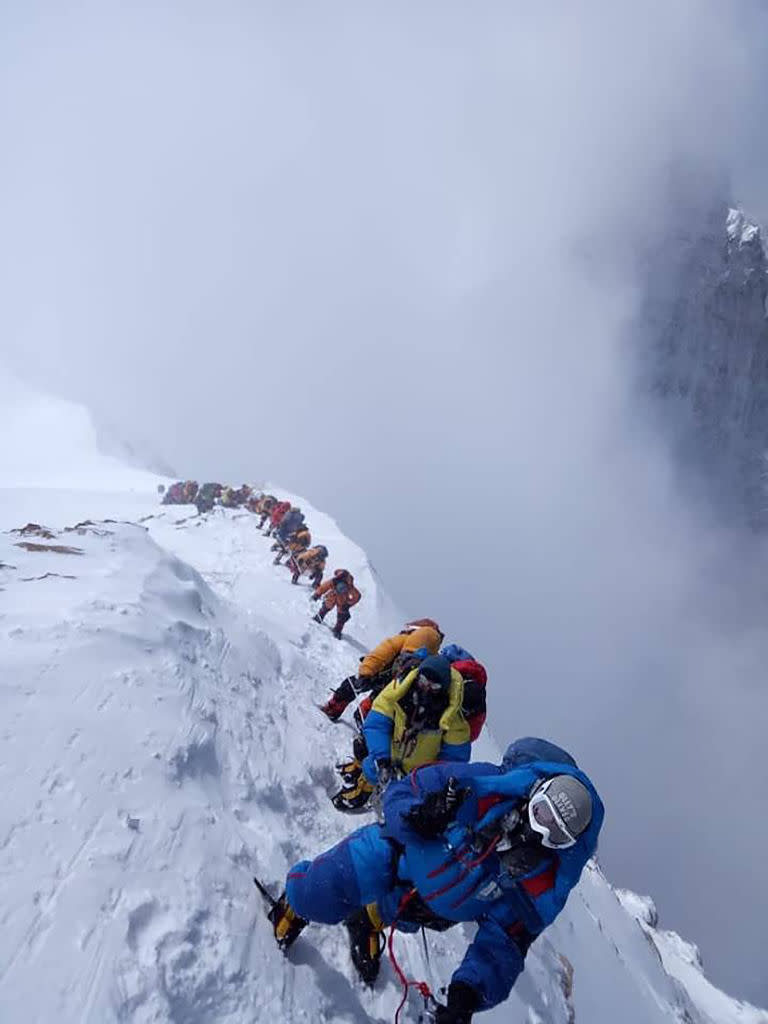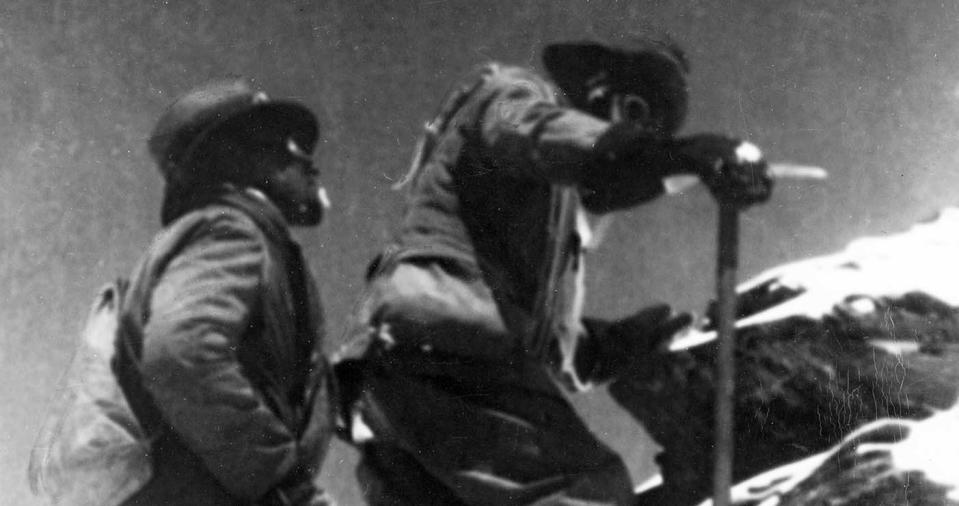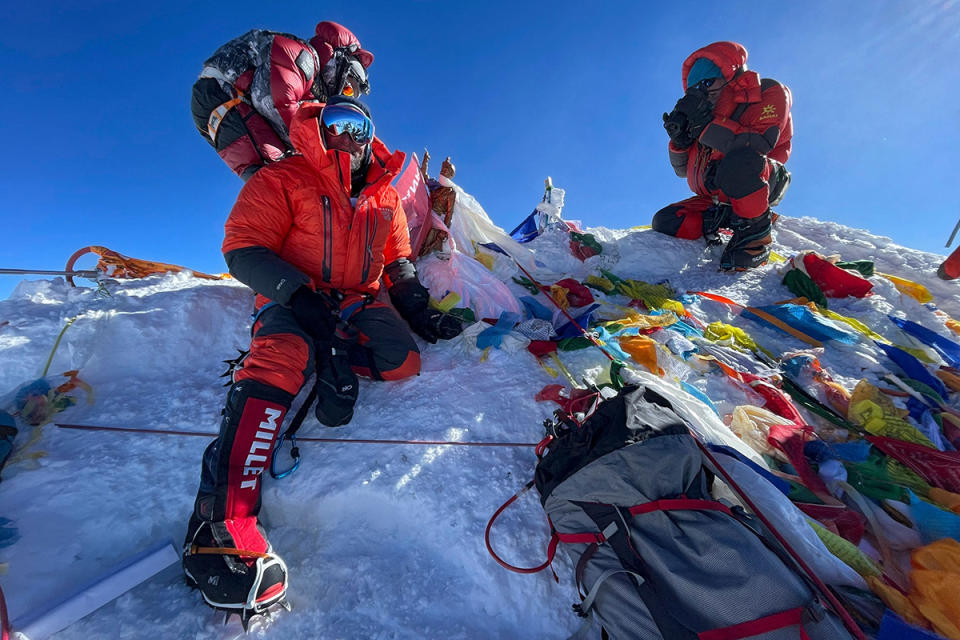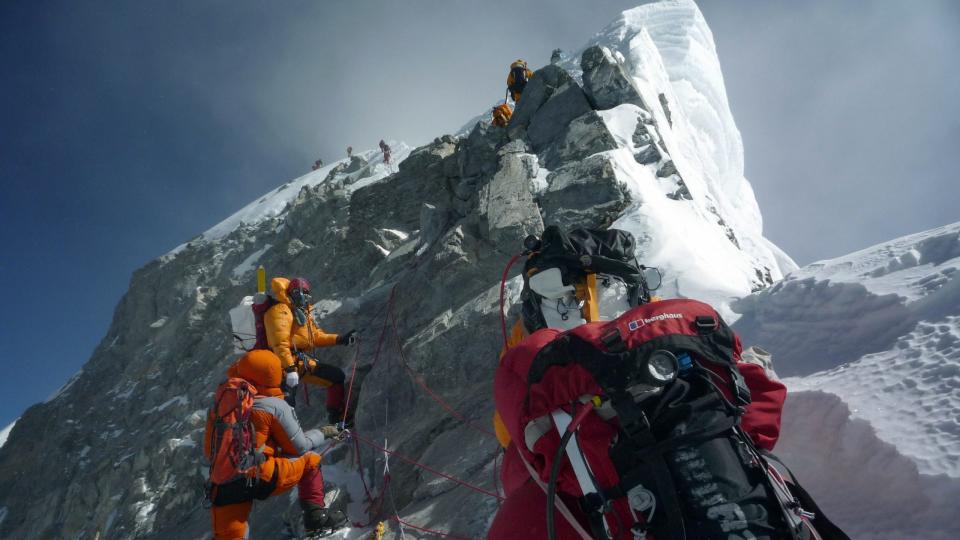Mount Everest, Still Mountaineering’s Most Coveted Prize
- Oops!Something went wrong.Please try again later.
This article originally appeared on Climbing
This article is part of Climbing’s online archives documenting climbing’s greatest mountains and climbs, and its pioneering practitioners such as Marc-Andre Leclerc.
Everest (8,848 meters/29,031 feet), also known as Chomolungma (Tibetan) and Sagarmatha (Nepali), is the world's highest mountain. Located in the Khumbu region of the Mahalangur Himal, a sub-range of the Himalaya, Everest is positioned on the border between China (to the north) and Nepal (to the south). The summit is accessible from both countries, though climbing from Nepal is more popular, for several reasons (see "Climbing Routes" below).

Though it is not considered the easiest of the world's 14 8,000-meter peaks, Everest is by far the most popular. Overcrowding on the mountain, in addition to increasing commercialization beginning in the early 1990s, has led to significant environmental degradation and safety concerns.
In 2018 and 2019, Everest saw record-breaking ascent numbers of 807 and 891 climbers, respectively. While the coronavirus pandemic led to a drop in ascents in 2020 and 2021, ascents rebounded in 2022, with 690 individuals reaching the summit. As of July 2022, Everest has seen 11,346 successful ascents by 6,098 individuals. 311 climbers have died on the mountain.
History
Everest is named for Sir George Everest, Surveyor General of India from 1830 to 1843. While Everest had little to do with the mountain himself, he was responsible for mentoring Andrew Scott Waugh, who succeeded him as Surveyor General and oversaw the initial mapping and surveying of the peak, and also for hiring Radhanath Sikdar, the Indian mathematician who successfully calculated the mountain's elevation for the first time in 1852. Waugh proposed naming the mountain (originally christened "Peak XV") in his mentor's honor in 1856.
The first attempts at a summit of Everest were made by British expeditions in the early 1920s, beginning with a reconnaissance expedition in 1921 which reached approximately 23,000 feet on the North Col. Another expedition the following year, the first serious attempt to reach the summit, broke the world altitude record twice, first at 26,800 ft on the North Ridge, and later at 27,300 ft higher on the route.
The 1924 British expedition is of particular note. Leading mountaineer George Mallory and partner Andrew Irvine disappeared high on the mountain after leaving high camp near 26,900 feet. This, in combination with a nebulous sighting by team member Noel Odell indicating the duo could have reached the Second Step, led some to speculate that Mallory and Irvine may have made the peak's first ascent. (Mallory's body was discovered in 1999 by Conrad Anker, who stated he believes it unlikely the former could have reached the summit.)

The overwhelming consensus is that Everest was not successfully climbed until nearly 30 years later, however, in 1953. Sherpa Tenzing Norgay and New Zealander Edmund Hillary reached the summit on May 29, as part of the 1953 British Expedition. They used the South Col route from Nepal, which remains the mountain's most popular route today.
A number of other "firsts" were made throughout the 20th century. Of note, a Chinese team claimed to make the first ascent via the North Ridge in 1960, though the claim was considered dubious due to lack of photographic evidence, and opinions differ on its veracity. Reinhold Messner and Peter Habeler made the mountain's first ascent without bottled oxygen in 1978, and Messner returned for the mountain's first solo ascent (also non-ox) in 1980. The first winter ascent of the mountain occurred the same year, by a Polish team on the South Col.
For several decades following its first ascent, Everest remained a prize only available to well-funded, experienced national mountaineering expeditions. By the early 1990s, however, commercial mountaineering outfitters began to make the summit viable for amateur climbers, and numbers on the mountain dramatically increased.

In the intervening years, improvements in gear, training, and weather forecasting have led to significantly increased overall safety on Everest. Rampant overcrowding, however, combined with the relative inexperience of many guided clients, led to an uptick in (arguably) preventable accidents early in the peak's commercialization. Of note is the 1996 Everest disaster, which saw eight climbers die in a blizzard. That disaster was the subject of Jon Krakuaer‘s book, Into Thin Air. Krakauer was on the 1996 climb to write a feature for Outside magazine.
In total, 1,383 climbers summited Everest in the 20th century, a period spanning nearly 50 years from its first ascent in 1953. By contrast, over 10,000 have summited since the turn of the 21st century. In the last decade, the overall death rate on the peak has increased as well, with Everest chronicler Alan Arnette hypothesizing, "The primary reason ... [is] the draw of low-cost climbs attracting inexperienced clients supported by inexperienced guides."
Climbing Routes
There are approximately 20 named routes on Everest, though 99 percent of all climbers use either the South Col/Southeast Ridge route via Nepal or the Northeast Ridge via Tibetan China. The South Col is the more popular of the two, with approximately 70 percent of climbers using this route. This is both due to increased volatility in the Chinese permit process and the Northeast Ridge's slightly higher technical difficulty.
In general, the South Col's risks included increased traffic and the notoriously unstable Khumbu Icefall, while hazards on the Northeast Ridge include harsher weather (higher winds and colder temperatures), more sustained periods at higher elevations, and slightly increased technical difficulty. The South Col has a slightly higher death rate between the two, likely because the average climber attempting from the Tibetan side is more experienced in general.
Everest's main climbing season occurs in the spring, between April and May, with most ascents occurring in the second half of May. In fact, over 80 percent of all Everest ascents occur from May 15 to 27. However, the mountain has been summited year-round, and equally viable summit windows also appear in the fall season, particularly in mid-October.

Controversy
As mentioned above, Everest is the most popular 8,000-meter peak in the world, and its heavily-commercialized nature attracts a significant number of amateur mountaineers, often with scant climbing experience beyond training specifically for their Everest bid. Numbers on the mountain have surged in the last decade, leading to severe overcrowding, with bottleneck lines on popular summit days sometimes requiring large groups of guided climbers to wait for hours on end in dangerous conditions.
The mountain has also seen increasing degradation due to large quantities of food waste, used oxygen canisters, human feces, discarded gear, and other trash. On average, an Everest climber generates 18 pounds of waste during their expedition, according to National Geographic. Much of this is left on the mountain. Everest is also notoriously expensive to climb, with the average summit attempt costing $45,000 to $50,000, and many climbers spending upwards of $150,000. A climbing permit alone costs between $11,000 and $8,000. In short, climbing Everest is financially inaccessible for all but the uber-wealthy or otherwise well-financed (i.e. climbers who can secure sponsorships).
In light of these factors, Everest is increasingly viewed by many in the climbing community as an unworthy objective, and perhaps even an ignoble one.
Facts and Figures
Elevation: 8,848 meters/29,031 feet
Range: Mahalangur Himal, Himalaya, Nepal/China
First ascent: May 29, 1953
First ascentionists: Edmund Hillary and Tenzing Norgay
Cumulative successful summits: 11,346
Cumulative deaths: 311
Approximate fatality rate: 3%
Individuals with the most summits to date: Kami Rita Sherpa (26 summits)
Average cost to climb: $45,000
For exclusive access to all of our fitness, gear, adventure, and travel stories, plus discounts on trips, events, and gear, sign up for Outside+ today.

